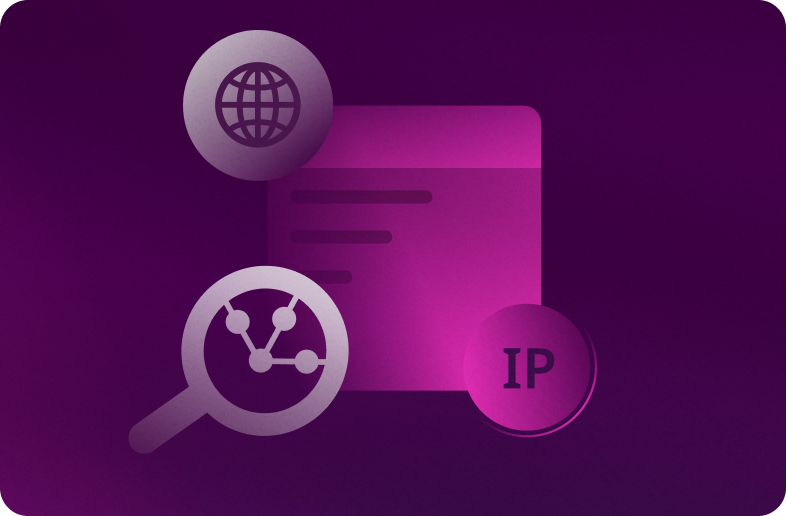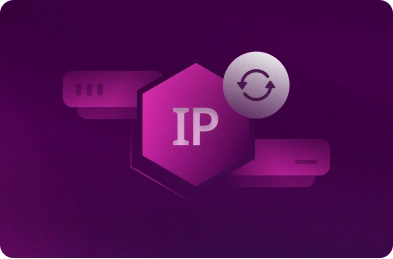
Best Web Scraping Proxies in 2025
- Guides
- •
- 20.6.2025
The Best Web Scraping Proxies in 2025: A DigiProxy Guide
Web scraping can feel like a constant battle against blocks. Before you've gathered all the data you need, you hit a wall: throttling, IP flagging, or expired login tokens. These aren't random glitches; they're a direct result of how your connection appears to the target website.
DigiProxy specializes in building proxy systems designed to handle this pressure. With their solutions, you can run clean, rotate IPs at speed, or lock into stable sessions that won't fall apart under heavy request volumes. The best proxy for your needs depends on how your scraper operates.
Rotating Residential Proxies: Blending In Seamlessly
Rotating Residential Proxies are engineered for stealth. You can send a different IP with every request or maintain the same one throughout an entire session. This flexibility is key, whether the site demands a consistent identity or prefers a new connection each time.
If your scraping involves targeting specific regions or pulling ZIP code-dependent content, this proxy pool handles the routing effortlessly. It ensures your traffic looks normal, even if your scraper is pulling high-volume datasets hourly. There's no extra configuration needed to avoid bans, and no hard reset when a site tightens its filters.
This is your go-to tool when the platform actively responds to traffic patterns.
Budget Residential Proxies: Economical and Effective
Budget Residential Proxies also route through residential IPs, but you're sharing more of the underlying infrastructure. This doesn't hinder the job; it simply means performance can fluctuate based on your scraper's run time or the specific location you're pulling from.
These proxies still offer rotation, support session links, and maintain geo-targeting. They're well-suited for scraping open listings, public directories, and site pages that don't adapt based on device type or user behavior.
When your projects require less "polish" and more straightforward functionality, this proxy runs smoothly under those conditions.
Static Residential Proxies: Maintaining Consistency
Not all targets play nicely with rotating IPs. When a login, token, or session is tied to a single address, Static Residential Proxies keep everything consistent. You load the session, build your request flow, and nothing changes behind the scenes.
These proxies still present as residential, helping to bypass superficial filters. They're ideal for scrapers that operate within a user panel, access internal dashboards, or repeatedly call the same endpoint without triggering new authentication checks.
If the site dislikes mid-process signal switching, this is the safer proxy option.
Datacenter IPv4 Proxies: Speed and Efficiency
When your target doesn't actively resist automation, Datacenter IPv4 Proxies prioritize speed. These proxies come from clean IP blocks with robust bandwidth and reliable routing. You can use them for timed jobs, bulk link pulls, or scheduled refreshes without concern for fingerprint mismatches.
They don't mimic real user traffic, nor are they meant to. Their primary goal is to complete each request quickly and move to the next. This makes them perfect for feeds, product APIs, and any stable surface that allows your scraper to move rapidly without needing to adapt headers or location.
Datacenter proxies maintain pace when the task is steady and high-volume.
Datacenter IPv6 Proxies: High Volume and Concurrency
IPv6 support depends on the target site, but if it's available, this option offers greater spread. You can assign hundreds of IPs and send out requests in parallel, eliminating the need for complex rotation logic, as each IP stands on its own.
You won't use this for scraping platforms that filter by city or region, as there's no control there. However, it's invaluable for uptime monitors, metadata pulls, or test suites that need to touch thousands of pages quickly without repeating the same address.
This is a true volume tool, designed for maximum concurrency.
Mobile LTE Proxies: Accessing Mobile-Specific Content
Some pages behave differently when a request appears to originate from a phone. Mobile LTE Proxies route through actual mobile networks using real SIM cards. This makes them significantly harder to identify and highly effective for accessing feeds tied to mobile behavior.
Scrapers targeting app stores, mobile search results, or region-restricted ads often rely on this type. They are slower, which is to be expected, but the gain is access that wouldn't be possible from a desktop profile or static residential IP.
You deploy these where it truly counts—they are a strategic "sniper" tool.
Final Take
To summarize, if you're pulling high-value data at scale and need it to remain clean, begin with rotating residential proxies; they're built for that purpose. Budget residential proxies are suitable when the request rate is lighter. Static proxies keep things steady and consistent. Datacenter IPs provide fast output for open systems. IPv6 allows for deep, high-concurrency runs. Finally, LTE gives you an entry point when everything else is blocked.
Effective scraping hinges on your traffic making sense to the target site. DigiProxy provides the options you need to keep that traffic signal above board, without triggering alerts.


